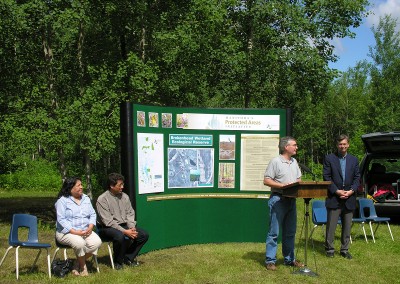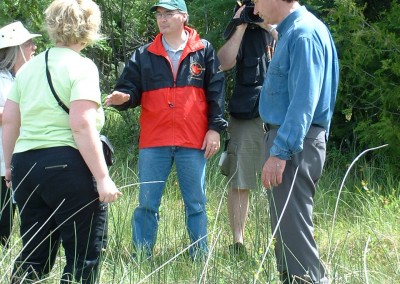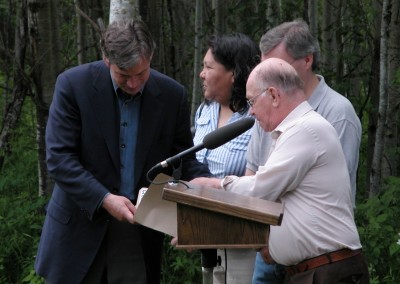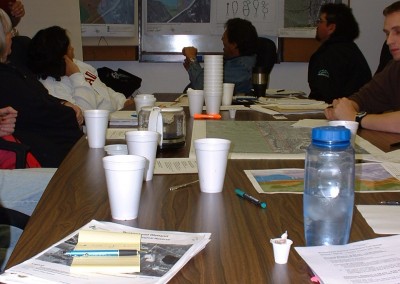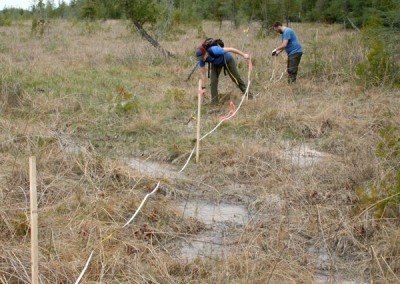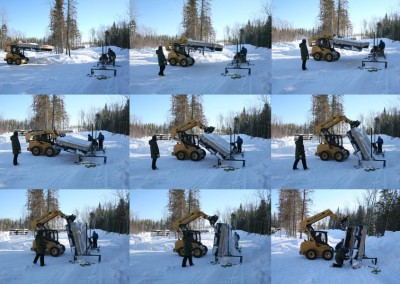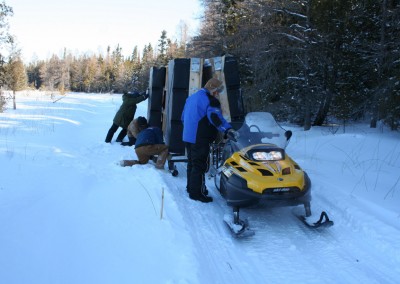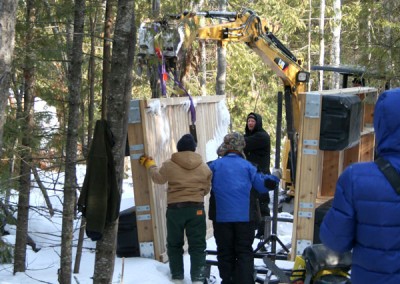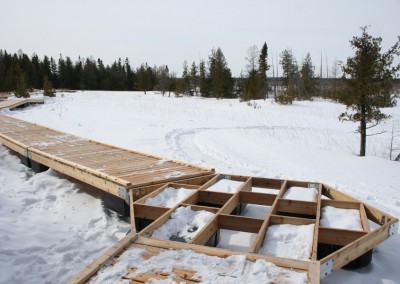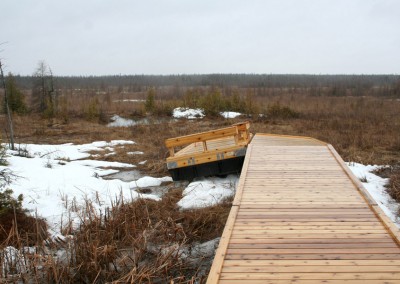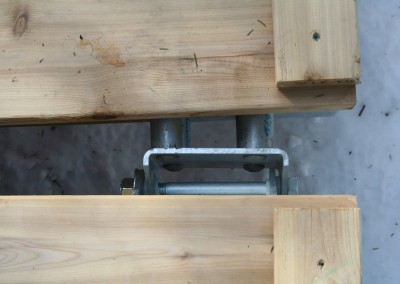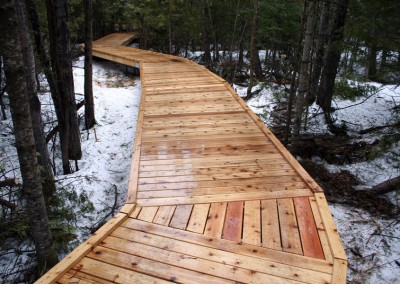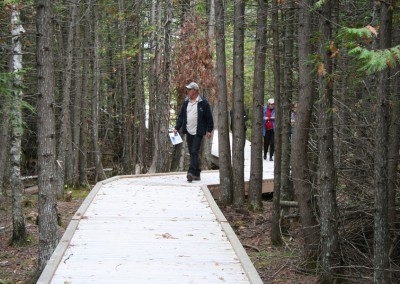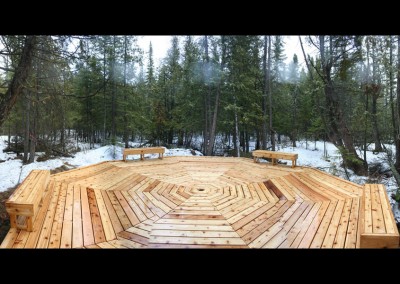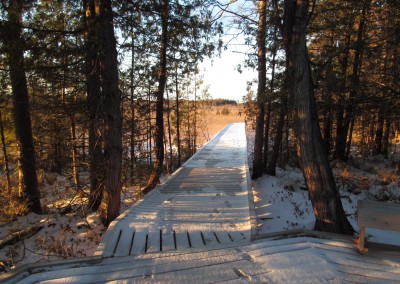History of the Trail
In 1998 the newly-formed non-profit Native Orchid Conservation Inc. (NOCI) nominated the Brokenhead Wetland under the Manitoba government’s Protected Areas Initiative for ecological reserve status. The group was formed by the late Bud Ewacha, a member of the Manitoba Orchid Society, who had a cottage at nearby Gull Lake. Bud had a passionate interest in wild orchids and had begun exploring the areas around Gull Lake to find them. When he realized that the provincial government of the day had installed a well between Gull Lake and the wetlands, he was concerned that the lowering of the water table would impact the wetlands and consequently the orchids. Bud decided to involve the public in the issue by having a display of the orchids and the Gull Lake issue at the Manitoba Orchid Show. He recruited some members of the Orchid Society and others and NOCI was formed to nominate the wetlands for ecological reserve status. NOCI members assisted with conducting a plant survey which revealed that there are 350 species of plants in the wetlands and surrounding area, including 23 rare plants, 28 native orchids and 8 carnivorous (insect-eating) plants. The Manitoba government conducted further studies and the well was shut down permanently. In 2005, 560 hectares (1385 acres) of the wetland received the highest protection allowable, designation as an ecological reserve. In 2012 the size of the ecological reserve was increased to 1240 hectares (3064 acres). During the nomination process NOCI and the Manitoba government consulted with the nearby Brokenhead Ojibway Nation (BON), who had used the area for over 300 years. The land is part of their Treaty Land Entitlement and initially there were concerns that this might prevent the area from receiving ecological reserve status.
Treaty Land Entitlement (“TLE”) refers to land owed to certain First Nations under the Numbered Treaties in Manitoba signed by the First Nations and the British Crown between 1871 and 1910. Treaties 1 to 10 provided that the Crown would set aside a certain amount of land as reserve land based on the populations of the “Indian bands” at the time of the original surveys for reserve lands. Not all Indian bands received their land entitlement as promised in the Numbered Treaties and this is what is referred to as “Treaty Land Entitlement”. See more on TLE and the TLE Framework Agreement signed between Canada, Manitoba and the Treaty Land Entitlement Committee of Manitoba Inc. at tlec.ca.
After some research a lawyer, who is a NOCI member, volunteered to search the issue and discovered that the land could entertain both ecological and treaty land entitlement status. This meant that BON could continue to exercise their rights to use the wetland for collection of medicinal and ceremonial plants, as well as hunting and fishing.
Soon after the Brokenhead Wetland was declared an ecological reserve, some members of BON expressed an interest in building a trail so that elders could pass on their traditional knowledge of the wetlands to their children and grandchildren in a safe environment. A working group, made up of BON, NOCI and the Manitoba Model Forest (MMF), and with encouragement and counsel from the Manitoba government, joined together to form Debwendon Inc., a non-profit organization dedicated to the protection of the Brokenhead Wetland Ecological Reserve (BWER). The late Lawrence Smith, BON elder, suggested the name Debwendon, which means “trust” in Ojibway. Debwendon Inc. became a registered, non-profit charity in 2008.
With a mandate to raise public awareness of the historic cultural connection between BON and the Brokenhead Wetland, the group formulated a plan to construct and maintain a boardwalk and interpretive trail adjacent to the BWER for the benefit of all Manitobans. Tony Deger of Riverside Gravel generously gave up a gravel lease on a 100 m-wide strip of land proposed for the trail.
BON made the initial financial contribution to hire a landscape architectural firm for a preliminary trail design. The late Mike Waldram, General Manager of the MMF at the time, helped with the funding as did NOCI. In collaboration with the landscape architect, the board members from all three groups outlined the route and identified significant trail features including rare and medicinal plants.
In the fall of 2011, the late Eugene Reimer, a dedicated NOCI and Debwendon board member, set up the Eugene Reimer Environment Fund through the Winnipeg Foundation to provide funding for the operation and maintenance of the boardwalk and trail in perpetuity. Eugene made this gift his lasting legacy to the wetland where he spent so many enjoyable hours exploring and photographing the orchids and other plants he loved. With assurance that operation and maintenance funding was in place, the Manitoba government announced on October 24, 2011 that they would fund the capital cost of the boardwalk and trail so that “the public could safely visit the wetlands without causing damage to the fragile native plants and their habitat” (Premier Greg Selinger, Press Conference).
While the Manitoba government took on the management of the construction project, Debwendon Inc. worked on developing the trail interpretation. In 2012 construction of the access road and parking lot began.
In the winter of 2013/14 the 16 foot-long boardwalk components were laid in place on top of the snow, bolted together, and the custom corners completed. As spring advanced, and in spite of the boardwalk still requiring levelling, word got around and many people started to visit the trail. In the summer of 2015 toilets were completed; picnic tables and a garbage bin were installed.
Work is continuing this spring (2016) to complete the installation of the interpretive signs, trailhead structure and entry sign. An official opening is planned for June 22nd 2016. Refer back to this website for further updates on the official opening.
Ecological Reserve Declaration, June 2005
ER opening in June 2005. Sitting Bev Smith and Paul Chief from Brokenhead Ojibway Nation; at podium Stan Struthers, Min. of Conservation and Gary Doer, Premier. Property of the Manitoba government.
Ecological Reserve opening in June 2005. Doris Ames with Minister of Conservation Stan Struthers and Premier Gary Doer. Person on left forground is unknown. Property of the Manitoba government.
Ecological Reserve opening in June 2005. Richard Reeves (NOCI), with visitors to the fen. Property of the Manitoba government.
First trail meeting at Brokenhead Ojibway Nation band office with Rob Nedotiafko from landscape architect firm, 2007.
Preliminary trail route presented at first trail meeting at Brokenhead in 2007. Property of the Manitoba government.
Declaration of Ecological Reserve Expansion, June 22, 2012.
Minister of Conservation and Water Stewardship, Gord MacIntosh speaking at 2012 Ecological Reserve expansion, June 22, 2012. Photo by Peggy Bainard Acheson.
ER Expansion June 22, 2012. From left Greg Dewar, MLA Selkirk, Carl Smith, Debwendon Chair, Doris Ames, Vice-Chair, Gord MacIntosh, Minister of Conservation and Water Stewardship, Kelly-Anne Richmond, Director, Parks Branch, Jim Bear, Chief, Brokenhead Ojibway Nation. Photo by Richard Reeves.
Trail Preparation and Construction Phase
Trail marking in forest, 2013. Far right is Ryan Wakshinski, landscape architect and project manager, MB CWS. Photographer unknown.
Interpretation consultant site visit, September 2014.
Walking the boardwalk through forest, Sept 2014. Jeff Provost, Debwendon Inc. Photo by Ryan Wakshinski.
Consultant site meeting, Sept 2014. Left to right: Andrea Kennedy (HTFC), Richard Reeves (Debwendon, Maureen Krauss (HTFC), Jeff Provost (Debwendon). Photo by Peggy Bainard Acheson.

